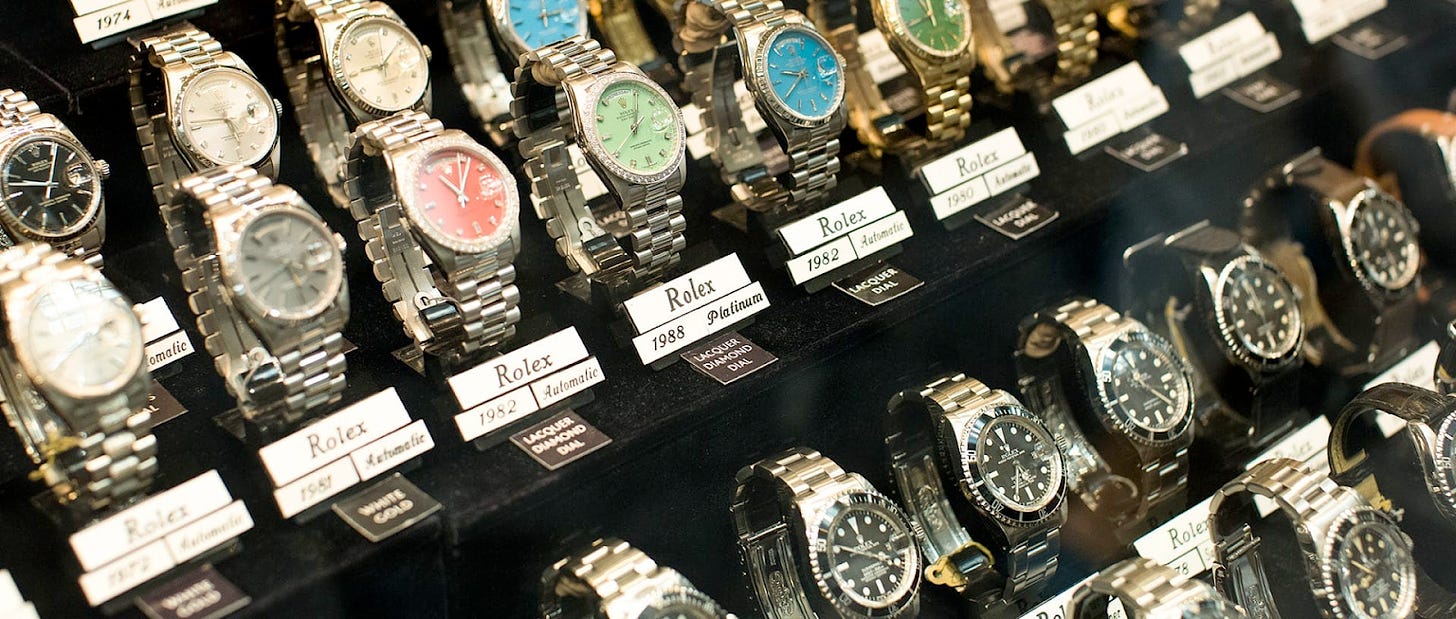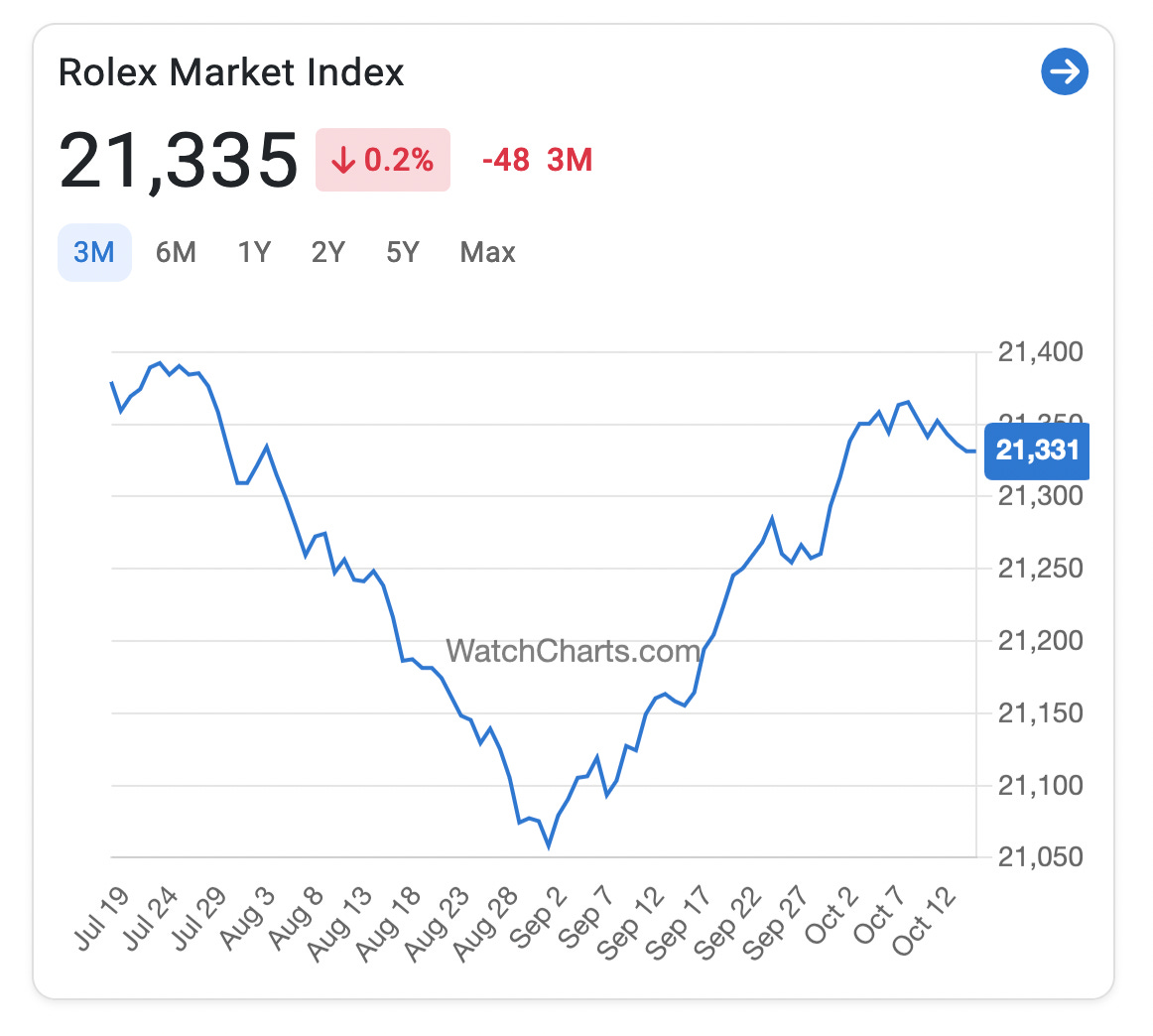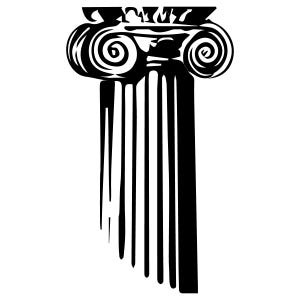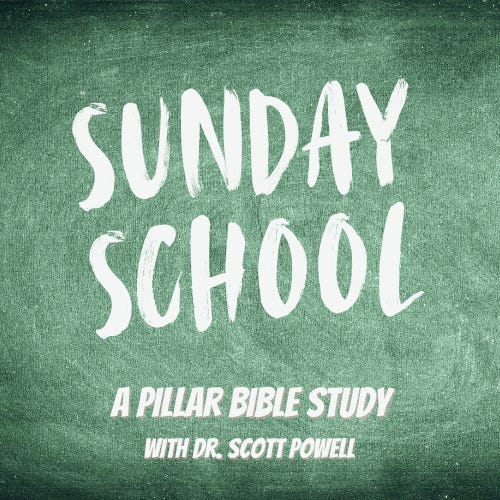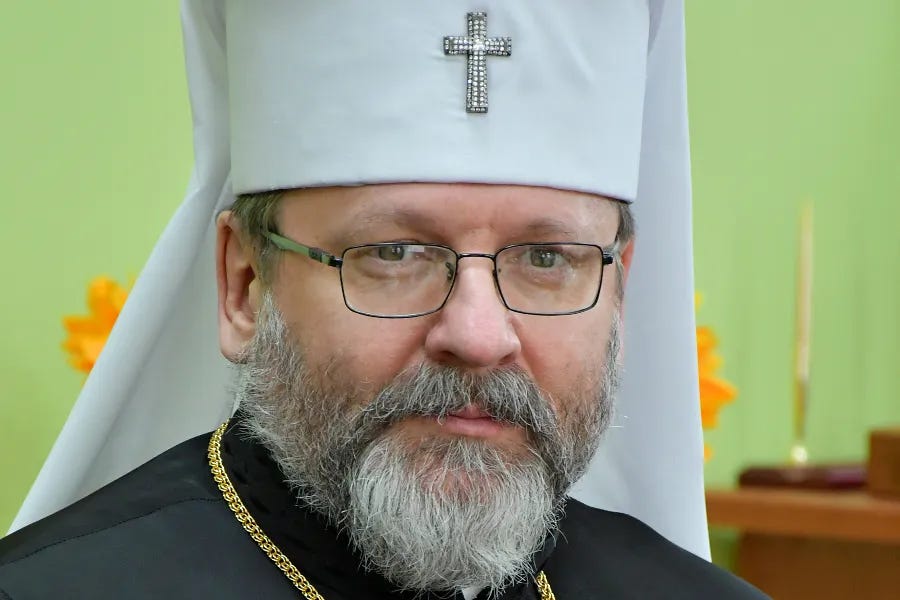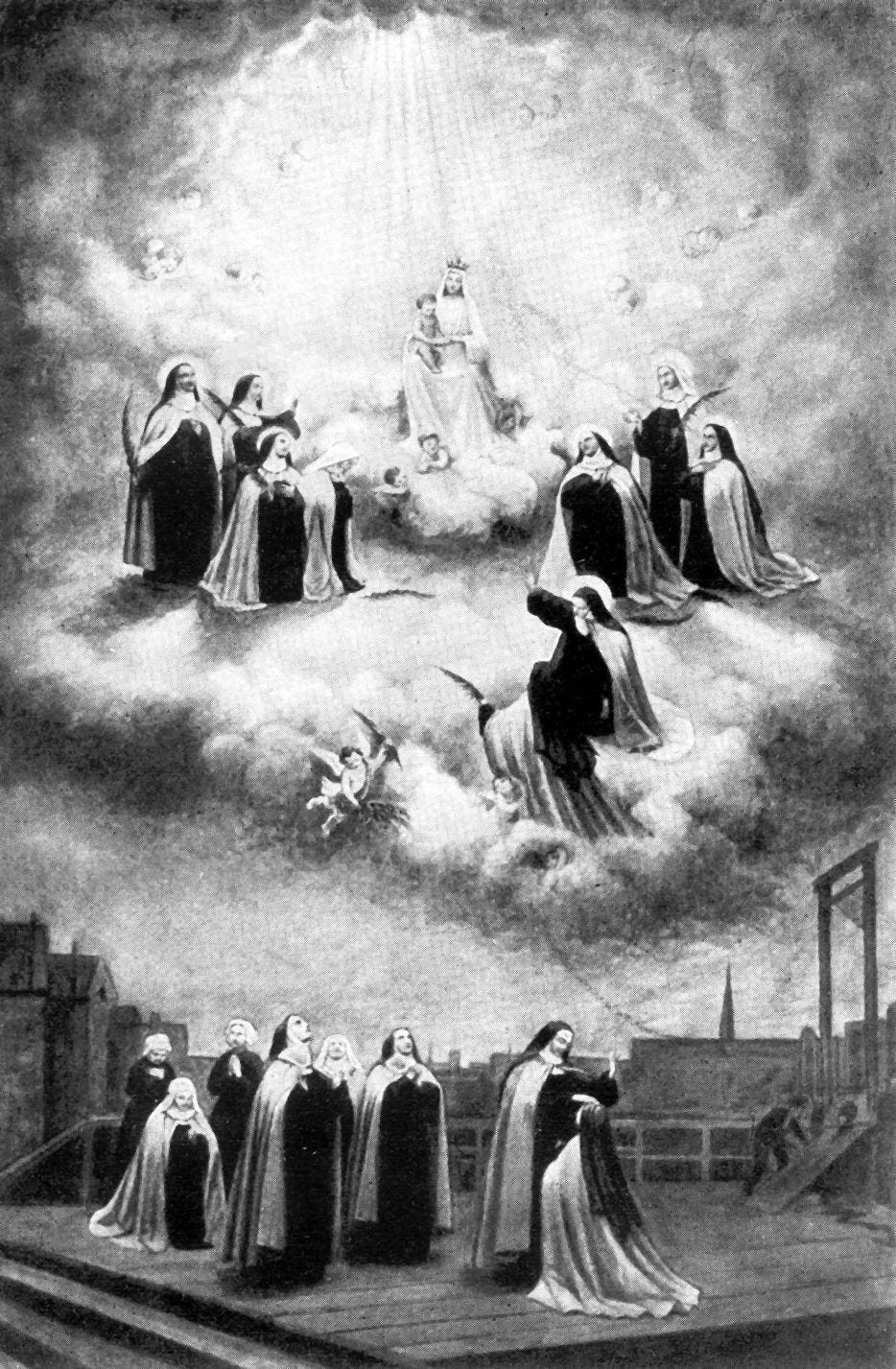Pillar subscribers can listen to this Pillar Post here: The Pillar TL;DR
Happy Friday friends,
It was my patronal feast earlier this week, that of St. Edward the Confessor.
Every year, I try to do what I can to mark the occasion, and to make some sincere request for the saint-king to intercede for me. Though in all this, I confess my namesake saint, whose pious legend is hard to parse from historical fact, often eludes me.
Literally, on some occasions.
I used to work across the road from Edward’s great legacy, Westminster Abbey, which he ordered built in honor of St. Peter in exchange for the pope dispensing him from a promised pilgrimage to Rome — affairs of state detained him at home.
The king was buried there, along with centuries of national notables after him.
The abbey, like Edward’s successors in law, has long since lapsed into schism, but his shrine is mercifully still preserved somewhat separate from the tourist loop around the building.
Working across the road, I made it my annual devotion to (try to) pray at his tomb, but getting into the abbey still meant fighting your way through the throngs of impious visitors and negotiating with the porters. As a major destination, the abbey charges steep admission fees which, in theory, don’t apply to pilgrims or those seeking entry for purposes of prayer.
Convincing the robed abbey officials that I wasn’t just looking to cut the line and skip the charge was an annual moment of tension, and I wasn’t always successful. Many of them, despite their quasi-clerical status, seemed genuinely incredulous that anyone would actually want to pray in the church.
On the occasions I was granted admittance, I would be escorted by a member of staff directly to Edward’s tomb, where my devotions would be supervised, and I was then ushered back out of the building, lest I be tempted to sneak a selfie at the grave of a secular saint like Charles Darwin.
When I couldn’t convince them that an actual Christian wanted to actually pray at the tomb of an actual saint on his actual feast day, I’d instead stop off at a religious house across town on the way home. Their chapel has several of his relics. On the whole, those were usually moments of quieter and deeper intimacy with Edward, and the Lord.
Living now in Washington, I mark the day by just offering a rosary wherever I find myself, and saying the office for the saint-king. But having devoured historical biographies of him, I confess to being somewhat in the dark about his piety as a man — his office and age required some fairly ruthless action, at times, and he left us no body of religious writing or spiritual reflections.
I think I find the enigma of his sainthood comforting. If I can’t put my finger on anything in his life especially or obviously worthy of canonization, Lord knows evidence of faith is even more lacking in my own case.
If the Church can proclaim with confidence that Edward is alive in heaven, then there’s hope for me, too.
St. Edward, pray for us (me).
The News
A new legal clarification from the Vatican has raised questions about the U.S. bishops’ conference policy on days of precept — holy days of obligation when Catholics are required to go to Mass.
A letter surfaced online this week from the Dicastery for Legislative Texts to Bishop Thomas Paprocki, chair of the USCCB’s canonical affairs and Church governance committee, informing the bishop that there was nothing in the law to suggest that when a holy day of obligation is moved from an Advent or Lenten Sunday to a Monday, Catholics are dispensed from having to go to Mass two days in a row.
The law is clear enough, but what wasn’t immediately clear is why Bishop Paparocki (a prize-winning canon lawyer) would ask a question with such an obvious answer.
As we reported, the story behind the letter seems to be a gap in the USCCB’s own norms on Mass obligations, and a possible disagreement between conference committees.
The conference does have the authority to regulate the transfer of certain feasts, and to dispense from days of precept, and it has done so for a while now — stating that when (almost) any day of obligation has to be moved from a Sunday to a Saturday or a Monday, Catholics are dispensed from the obligation to go to Mass. But a notable gap in the USCCB norms is this country’s patronal feast, the Immaculate Conception, properly celebrated Dec. 8, which this year clashes with the Second Sunday of Advent.
That feast, almost uniquely, isn’t included in the conference's particular law on dispensed days, yet the USCCB’s liturgical calendar lists it as “not a holy day of obligation this year.”
So what’s going on, and do you have to go to Mass on Dec. 9 this year?
—
Speaking of the U.S. bishops’ conference, it announced Tuesday the slate of candidates for committee chairmanships and executive positions up for election at next month’s meeting in Baltimore.
Ahead of that meeting, we’ll be bringing you our customary handicapping of the races and picks for the likely race winners in due course.
Fabre already enjoys a sterling reputation among the clergy and faithful in Louisville and his previous diocese in Louisiana, and his stock is on the rise among his brother bishops, too.
The committee he’s now standing to lead is also near the center of probably the most contentious issue in the conference right now. So this election, and this bishop, is definitely one to watch.
—
Meanwhile, in Moscow, the pope’s personal envoy, Cardinal Matteo Zuppi, has been pressing his efforts to negotiate peace in the ongoing war in Ukraine and the return of the almost 20,000 Ukrainian children kidnapped by Russia.
Luke Coppen took a look at Zuppi’s mission this week, who he’s meeting, what he’s hoping to achieve, and what — if any — prospects for progress there might be.
This is definitely one to read.
—
The synod on synodality continues, and it is with exactly as much anticipation as you might imagine that I am packing now to head over and stand my shift next week.
What headlines have come out of the first two weeks of meetings have been predictably focused on the usual dramatic calls for radical reform, albeit from an obvious minority of voices.
As one delegate told him: “The first session was a waste of time. Everyone was talking about everything they wanted, the methodology was messy.” But this time around, “everything is more boring and technical, but it seems we’re finally getting onto something.”
So what, exactly, are they getting on to?
You can, and should, read the whole story here.
—
Of course, one of the big themes of the whole synod is how the Church can be authentically hierarchical and use synodality to improve governance and ecclesial life.
For the Vatican, becoming more “synodal” might best begin simply by picking back up some practices that have fallen out of fashion during the Francis papacy, JD argues.
But after a decade of Rome becoming less consultative, less consensus based, is the synod likely to turn back the clock, and is Francis prepared to lead by example in his calls for a truly synodal Church?
—
The German bishops — the ones that aren’t in Rome, that is — are in full-blown damage control mode this week after a study commissioned by the bishops’ conference provoked uproar among the nation’s farmers.
Believe it or not, many farmers are so mad about the report that they are actually saying they will leave the Church over the controversy.
So what’s going on?
The bishops now say that, although the conference sponsored the study, it was published by an expert group and did not express their views. But it has done little to calm the furore.
According to the head of one regional farmers’ association, “Farmers are extremely disappointed and angry. Many want to know how they can leave the Church as quickly as possible because they do not want to be denigrated by an institution that, in contrast to the rest of society, has always had very strong support, especially among farming families.”
Yikes.
A reminder, though, Luke’s Look Closers are a spinoff of his daily morning newsround up, Starting Seven — so I’m afraid they’re a special “thank you” perk for paying subscribers only.
—
The Order of Malta’s unique diplomatic status often gets mentioned alongside its global aid work.
It is unique, to be sure, having formal status at the UN, its own passports, diplomats, and a global network of embassies and missions, supporting formal relations with more than 100 countries, all while having no actual territory of its own and operating as a part-Catholic religious order and part volunteer organization.
But how does a nation (sort of) without territory, taxes, or any other of the normal practical supports that governments rely upon actually staff and fund a global diplomatic network?
Well, The Pillar sat down with the Order’s Grand Chancellor, who acts as chief foreign minister for the knights, to find out.
Honor thy father(land)
Two things happened over the course of the last week regarding China, both of which caught my eye.
The first was the interventions at the synod in Rome by Bishop Joseph Yang Yongqiang of Hangzhou and Bishop Vincent Zhan Silu of Xiapu. They were the first synodal interventions by bishops from mainland China, in itself a remarkable event.
Last year, two delegates from China came to Rome on strictly limited exit visas (which they pointedly overstayed). While they didn’t take to the microphone, just their presence in the assembly was itself news.
In his contribution this past last week, Yang said that “the Church in China is the same as the Catholic Church in other countries of the world: we belong to the same faith, share the same baptism, and we are all faithful to the one, holy, catholic, and apostolic Church.”
It’s at once the most obvious and most controversial statement a bishop could make. The Church in China is, of course, either the same as the Church everywhere — or else it is no Church at all.
But, of course, the Church in China is also very different, laboring under heavy government restriction and supervision, complicated by the Holy See’s controversial agreement with the CCP on the appointment of bishops — an arrangement seemingly more honored in the breach than the observance.
Yang and Zhan both reflected on the controversial policy (imposed by the government and endorsed by the Vatican) of “sinicization” which, depending on who you ask, is either a process of legitimate enculturation for the local Church or the total subordination of the faith to communist party dogma.
“We follow the evangelical spirit of 'becoming all things to all people’,” Yang said. “We effectively adapt to society, serve it, adhere to the direction of the sinicization of Catholicism, and preach the Good News.”
Zhan followed him up, offering reminders of previous ages when “the discernment between cultural differences and the need to preserve the authenticity of the Christian faith became a source of confusion for missionaries in China.”
“The Church in this new era has been given a new task of discernment, even though the voice of the Holy Spirit is always gentle and difficult to distinguish,” the bishop said.
Now, I don’t think I need to rehearse exactly what has gone badly wrong for the Church in China over the last few years. Anyone reading these newsletters is perfectly aware (as is the Vatican) of how damaging government action has been to the ecclesiastical fabric of the local Church, and how real the suffering of some faithful bishops has been since the Vatican-China deal was first signed in 2018.
And I think it’s reasonable to say that both bishops arrived in Rome with the clear mandate to put a smile on the situation, not to say lipstick on a pig, and offer a warm — if likely only rhetorical — invitation to the rest of the synod to come see the Chinese Church for themselves.
But I also think it would be a mistake to dismiss their presence and their words as mere propaganda.
While there’s an obvious argument to be had about whether the progress made in Vatican-China relations in recent years has been worth the prices paid, there is some progress. Both bishops are expected this year to stay for the whole synod session. That’s not nothing. And not for nothing are the conversations they have off-mic with their brother bishops from around the world.
I’ve heard some people opine that if Yang and Zhan were “serious,” or to be taken seriously, they should have been somehow explicit in denouncing the state of the Church in their country and the actions of their government.
That strikes me as itself an unserious expectation to have of them. For a start, it would likely serve no immediate practical purpose beyond securing their own punishment and convincing the government to crack down on future attempts by local bishops to speak freely with their brothers.
More broadly, I also think there’s a creeping sense that, because the Chinese Communist Party is unarguably a malign force, Chinese Catholics should in turn prove their bona fides by overt political dissent and opposition.
That’s almost always a demand made from the safety of somewhere else, and as the Chinese bishops would probably note, not a very deep reading of the Church’s own history.
Meanwhile, back in China, the second thing I noticed this week (in Starting Seven, of course) was that 120 priests and lay workers in Gansu were treated (subjected) to a “Party-Oriented Sermon Exchange Activity” put on by the Chinese Patriotic Catholic Association, the communist-controlled body through which it recognizes and manages the Church in China.
The aim of the event was to provide training in how to prepare properly “sinicized” homilies and sermons, and there was some emphasis placed on the Fourth Commandment. “Honor thy father” also means “honor the CCP,” attendees were told, since it is the father of all Chinese people, apparently.
Again, I have seen a lot of reflexive criticism of this event — and don’t get me wrong, to the extent you want to call the CCP a “father” to Chinese Catholics, it is an obviously abusive one. But at least no claims were made to fold President Xi into the First Commandment, which wouldn’t have been out of the question a few years ago.
And the reality is, the Church has existed and flourished before under the persecution of obviously tyrannical emperors, suffered martyrdom, and all the while prayed for the salvation of the regime and acknowledging its authority, within the limits of rendering unto Caesar only that which is his and not belonging to God.
This isn’t to absolve the Holy See of its obligation to recognize the suffering of the Church in China, and defend its dignity and freedom. And I think we’re all clear about its obvious shortcomings in that regard.
But there’s a difference between expecting moral courage from Rome and demanding, in effect, that Chinese bishops publicly set their faces against their country as proof they aren’t collaborators with the CCP.
There is such a thing as authentic enculturation, and I would argue the successful proclamation of the Gospel in China demands we seek it. I don’t think the CCP’s vision of sinicization is that. But I also think boxing the Church in China into a stance of purely political opposition is no real road to evangelization, either.
Wedding watch
Disclaimer: These end sections of the Friday newsletters are where I go a bit off topic, for my own entertainment, and hopefully yours.
I get not infrequent notes from some readers (most often free readers, I might add) bidding me to stick to the news and not waste their time with my thoughts on baseball, streetcars, bicyclists, and so on.
So, if that sounds like you, this is your moment. You can stop reading here, you will miss nothing important, and I will think none the less of you for it.
That said, I’ve had a long week, and I want to spend 10 minutes thinking about something that makes me smile. So let’s talk watches for a second.
In addition to being obsessed with them as items of engineering and aesthetics, I’m fascinated by the global market for high-end Swiss watches. And while it is nowhere near my favorite brand, the most interesting market in watches is definitely Rolex.
Rolex is fascinating for a lot of reasons. For a start, despite having relatively limited production (Omega can produce probably twice as much in a year) it has an enormous share of the global Swiss watch market (just over 30%). It’s also fascinating because it could be a lot bigger.
I’d estimate that the company could comfortably sell nearly double its current production at retail — it’s in the process of building a second factory to better meet market demand — and the result is a constant product shortage in shops.
Bottom line, go into a Rolex authorized dealer and ask to buy any popular men’s model and they will laugh at you. They don’t have any in stock, ever. And the waiting lists are long, arbitrary affairs at the mercy of local dealers.
But perversely, the upshot is that while Rolex makes a nice watch, the scarcity at retail makes it actually even more valuable (in terms of what people will pay for them) as a status symbol — so even battered and bruised second-hand pieces will trade for multiples of the MSRP on the used market.
All this makes the market for Rolexes both a great general indicator of wider Swiss watch market trends but also subject to sometimes unique micro-events. One of which caught my eye this week.
The background here is that the global Swiss watch market has been going absolute bananas over the last two decades. Business boomed most everywhere, alongside general economic growth — especially in China — and it was all goosed further by the development of more robust online marketplaces.
At the same time, economic events and forces that depressed or destabilized some asset markets have actually boosted the market for high-end watches: “quantitative easing,” zero-percent interest, and high inflation got you down? Well, that nice watch could actually hold its value above inflation better than a T-bill. Panicked that your crypto wallet will get hacked? You can literally keep your watches under your mattress, if you want to.
While COVID lockdowns hit some industries like a nuclear winter, the watch market had an absolute bonanza as people suddenly had a lot of time on their hands for a new hobby and no real chance to go out and spend their money in person. And after lockdowns ended, there were all kinds of incentives (deliberate and accidental) for people to get out and get spending to get the economy back on track.
The whole thing hit a peak in about April 2022. Since then — following some serious economic hangovers, especially in China, things have been sliding back to reality.
Rolex has pretty much exactly mirrored this trend.
But here’s where it got fun for me this week: something happened in September which caused the market to suddenly rebound significantly, but then suddenly stop.
What could it be? There were no new product launches, no big corporate news announcements, and Rolex is a totally private company, so it isn’t like the market moves to reflect expected profits.
It turns out the answer is simple: September is the opening of the Indian wedding season, a $130 billion - with a B - industry annually, when the country’s swelling ranks of millionaires and billionaires go absolutely all out on their nuptial celebrations, traditionally lasting a week or more.
And, it turns out, for all the reasons we talked about earlier, the current must-have status symbol to give your wedding retinue is, you guessed it, Rolexes. For everyone.
Now, as we said earlier, a big chunk of the snob appeal of having a Rolex to flex (or several to give away) comes from simple market scarcity, rather than intrinsic value, relative to other watches on the market.
Speaking for myself, if I were a billionaire with a B, and I were throwing a lavish bash to marry off my only daughter, I’d want something a little less obvious and a little more… more for my money. Like customized Reversos for the wedding party.
Either way, I’m not saying a nice watch would help me get over my little girl choosing another man over me or the convent (equally acceptable options, to be clear), but I would probably soften the blow. A little.
See you next week.
Ed Condon
Editor
The Pillar

